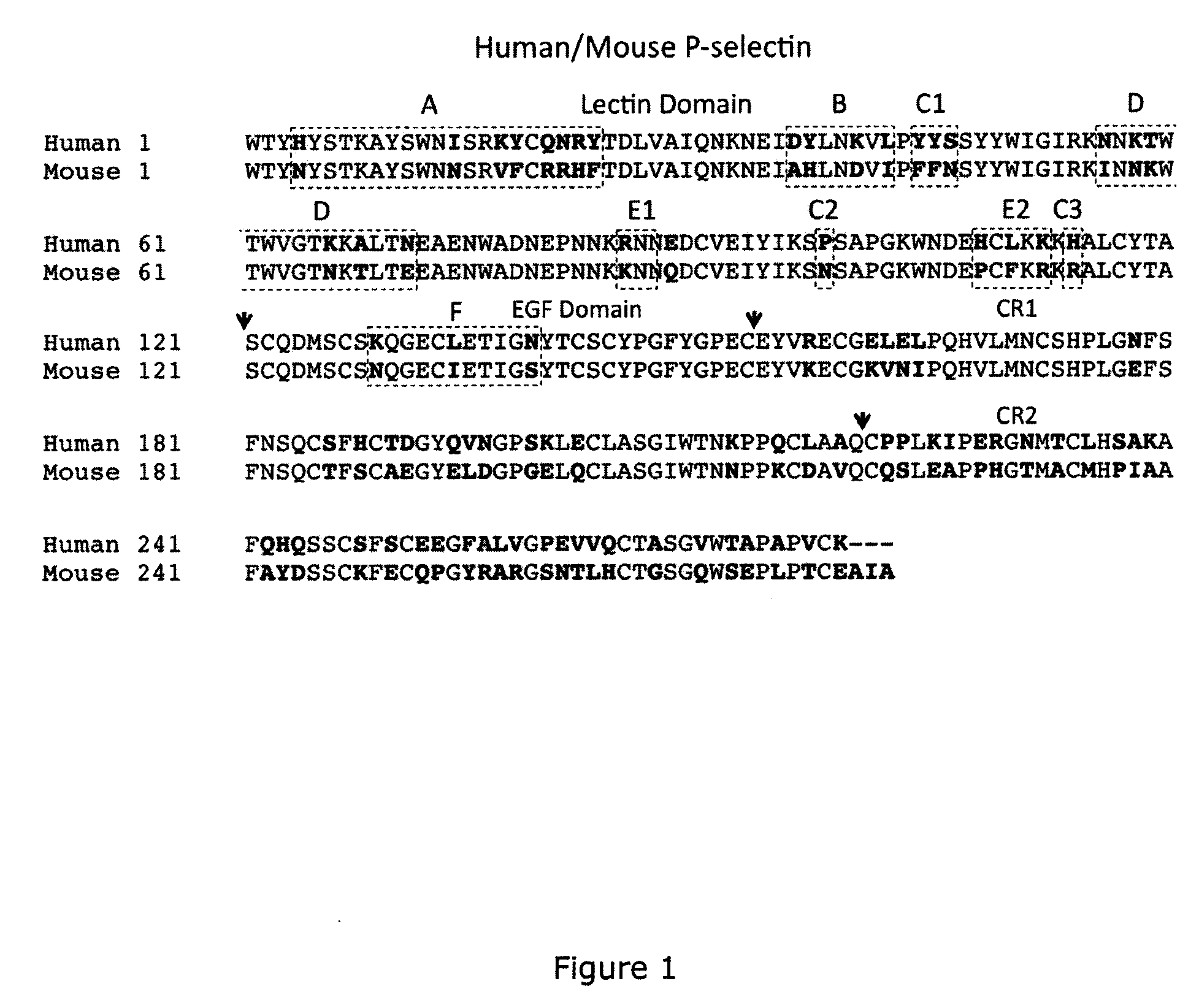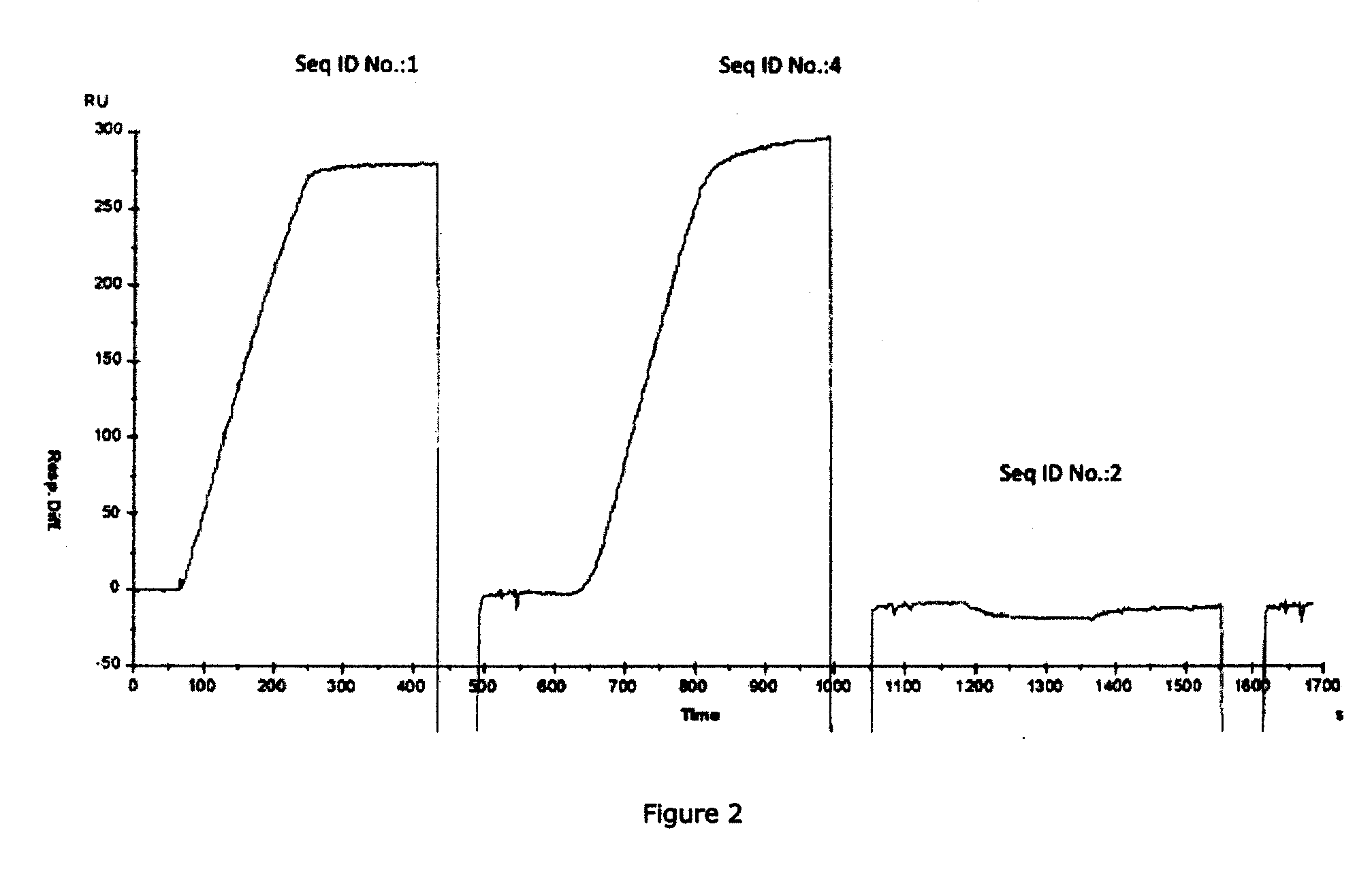Anti-p-selectin antibodies and methods of their use and identification
a technology of antipselectin and antibodies, applied in the field of anti-p-selectin antibodies and methods of their use and identification, can solve the problems of limited ability to predict disease course from birth, limited clinical severities, and serious and sometimes deadly complications, and achieves the effects of reducing vasoocclusion, increasing the number of rolling and adhesion leukocytes, and reducing the number of vasoocclusion
- Summary
- Abstract
- Description
- Claims
- Application Information
AI Technical Summary
Benefits of technology
Problems solved by technology
Method used
Image
Examples
Embodiment Construction
[0042]As indicated above, the presently disclosed and claimed inventive concepts, in one embodiment, are directed to antibodies which bind specifically to P-selectin and which block the binding of PSGL-1 to P-selectin (and are referred to herein as “function-blocking” antibodies). In some embodiments, these anti-P-selectin antibodies may also cause dissociation of preformed P-selectin / PSGL-1 complexes. The disclosure describes a heretofore unrecognized antibody binding domain (a conformational epitope) within the lectin domain (e.g., carbohydrate recognition domain, CRD) of P-selectin to which the function-blocking antibodies (which may be chimeric, human or humanized antibodies, or fragments thereof for example) bind. The presently disclosed and claimed inventive concepts also directed to anti-P-selectin antibodies which bind to the conformational epitope described herein and which have a dual function in (1) blocking binding of PSGL-1 to P-selectin and (2) causing dissociation of ...
PUM
| Property | Measurement | Unit |
|---|---|---|
| Molar density | aaaaa | aaaaa |
| Conformational barrier | aaaaa | aaaaa |
Abstract
Description
Claims
Application Information
 Login to View More
Login to View More - R&D
- Intellectual Property
- Life Sciences
- Materials
- Tech Scout
- Unparalleled Data Quality
- Higher Quality Content
- 60% Fewer Hallucinations
Browse by: Latest US Patents, China's latest patents, Technical Efficacy Thesaurus, Application Domain, Technology Topic, Popular Technical Reports.
© 2025 PatSnap. All rights reserved.Legal|Privacy policy|Modern Slavery Act Transparency Statement|Sitemap|About US| Contact US: help@patsnap.com



